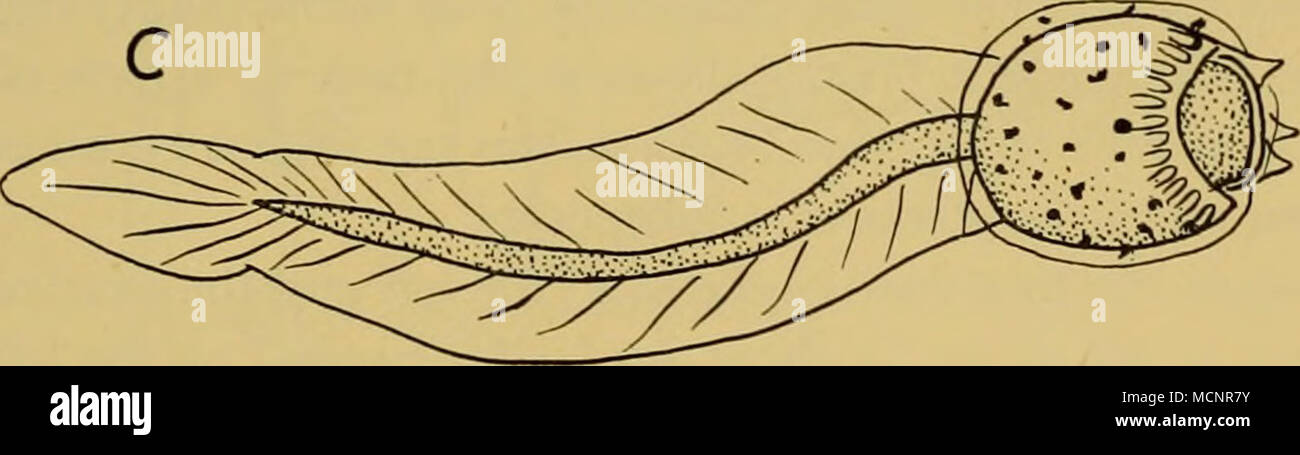. Text-fig. 33. Larvae of A, Polyzoa opuntia Lesson (St. WS 221), B, P. reticulata (Herdman) (St. MS 74), and C, Alloeocarpa incrustans (Herdman) (St. 388). External appearance (PI. V, fig. 6). The colonies vary in form, some having closely united zooids with little or no stolon, and in others the zooids are widely separated with long narrow stolons. Larva (Text-fig. 33B). In form this is very like the larva of P. opuntia. The trunk is from 0-72 to 0-90 mm. long, and the tail from i-o to 1-5 mm. excluding the projecting fin of test material. There are three papillae, about fourteen ampullae in

Image details
Contributor:
The Bookworm Collection / Alamy Stock PhotoImage ID:
MCNR7YFile size:
14.3 MB (329.3 KB Compressed download)Releases:
Model - no | Property - noDo I need a release?Dimensions:
4214 x 1186 px | 35.7 x 10 cm | 14 x 4 inches | 300dpiMore information:
This image is a public domain image, which means either that copyright has expired in the image or the copyright holder has waived their copyright. Alamy charges you a fee for access to the high resolution copy of the image.
This image could have imperfections as it’s either historical or reportage.
. Text-fig. 33. Larvae of A, Polyzoa opuntia Lesson (St. WS 221), B, P. reticulata (Herdman) (St. MS 74), and C, Alloeocarpa incrustans (Herdman) (St. 388). External appearance (PI. V, fig. 6). The colonies vary in form, some having closely united zooids with little or no stolon, and in others the zooids are widely separated with long narrow stolons. Larva (Text-fig. 33B). In form this is very like the larva of P. opuntia. The trunk is from 0-72 to 0-90 mm. long, and the tail from i-o to 1-5 mm. excluding the projecting fin of test material. There are three papillae, about fourteen ampullae in a ring round the anterior end of the trunk, and a single black sense organ. Biology. Larvae were present in colonies collected at Falkland Islands in February and March, and at South Georgia in November, December, February and March. Distribution. Subantarctic (Falkland Islands, Patagonian Shelf, Magellan Strait, Kerguelen, Campbell Islands, Macquarie Islands), Antarctic (South Georgia). I3 DM